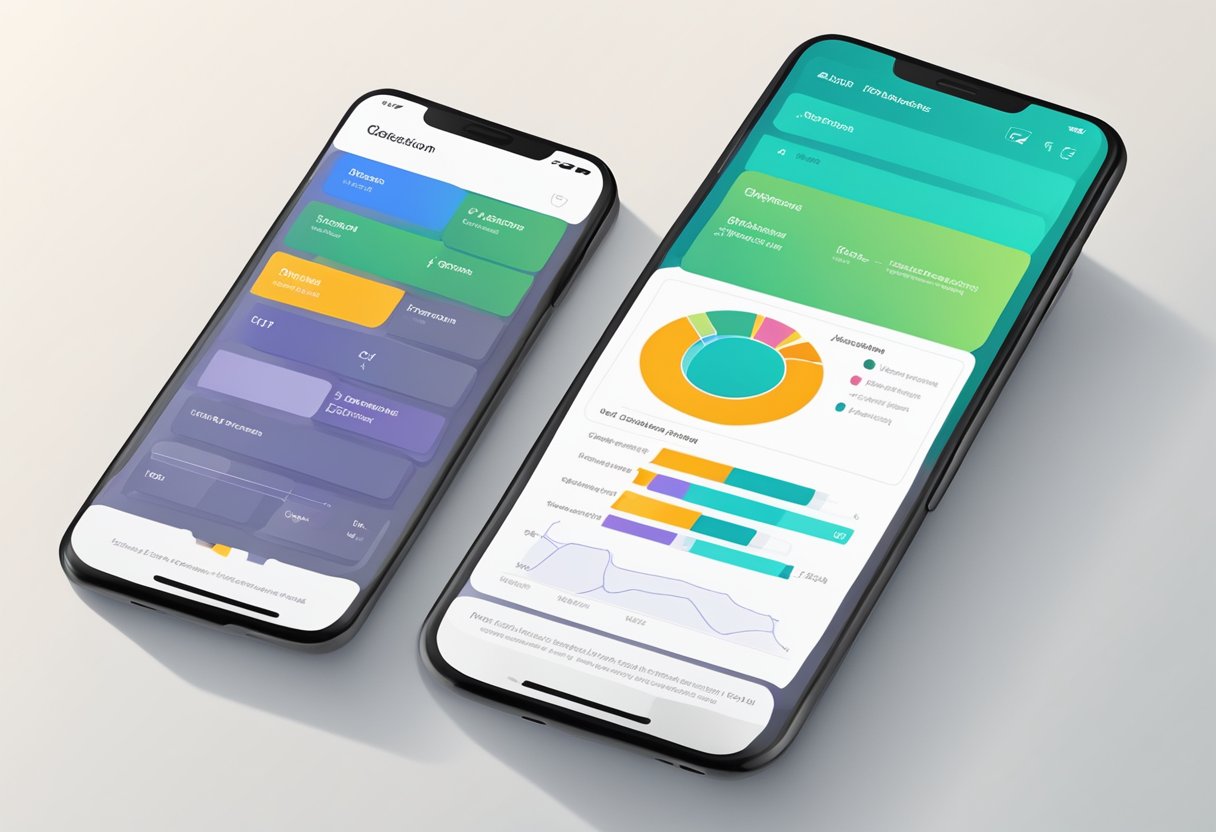Personalization in mobile user experiences is a crucial aspect of mobile app design. It involves tailoring the app experience to individual users’ preferences, behavior, and demographics.
By doing so, mobile app developers can deliver content, features, and recommendations that align with the user’s interests and needs.
The goal of personalization is to enhance user engagement, retention, and overall satisfaction with the app.
Understanding user behavior and preferences is the first step in implementing personalization in mobile user experiences.
Mobile app developers need to collect and analyze user data to identify patterns and trends.
They can use this information to create customized user experiences within the mobile application.
This includes tailoring in-app elements such as the interface, onboarding process, and content, as well as out-of-app elements like push notifications.
Designing personalized mobile experiences requires a balance between personalization and privacy.
Mobile app developers need to be transparent about the data they collect and how they use it.
They should also provide users with the option to opt-out of data collection and personalization.
By doing so, mobile app developers can maximize user engagement and retention while respecting users’ privacy.
Key Takeaways
- Understanding user behavior and preferences is crucial to implementing personalization in mobile user experiences.
- Designing personalized mobile experiences requires a balance between personalization and privacy.
- Maximizing user engagement and retention while respecting users’ privacy is the key to successful personalization in mobile user experiences.
Understanding User Behavior and Preferences

Mobile app personalization is all about creating customized user experiences within a mobile application based on individual user’s preferences, behavior, and demographics. The goal of personalization is to enhance user engagement, retention, and overall satisfaction with the app by delivering tailored content, features, and recommendations that align with the user’s interests and needs.
Importance of Data Collection
To implement personalization effectively, it is essential to understand user behavior and preferences.
Data collection is the foundation of personalization.
Developers must collect and analyze user data to gain insights into user behavior and preferences.
The data collected can be used to create user profiles, which are essential in tailoring the app experience to the user’s needs.
Data collection can be done in several ways, such as through surveys, feedback forms, and usage analytics.
Usage analytics is the most effective way to collect data as it provides real-time insights into user behavior, engagement, and usage patterns.
Developers can use usage analytics tools to track user behavior and engagement patterns in real-time, enabling them to make data-driven decisions on how to personalize the app experience.
Analyzing User Engagement Patterns
Analyzing user engagement patterns is crucial in understanding user behavior and preferences.
Developers must analyze user engagement patterns to identify what features and content users engage with the most.
This information can be used to create personalized content and features that align with the user’s interests and needs.
Designing Personalized Mobile Experiences
Personalization is a key aspect of creating engaging mobile user experiences. By customizing content and features to each user’s preferences, businesses can create tailored experiences that are more likely to resonate with their audience.
Customizing Content and Features
One way to personalize a mobile app is by customizing its content and features.
This can be done by collecting data on the user’s behavior, preferences, and interests.
By analyzing this data, businesses can identify patterns and trends that can be used to tailor the app’s content and features to each user.
For example, a news app might analyze a user’s reading habits to determine which topics they are most interested in.
Based on this information, the app could personalize the user’s news feed to show more articles on those topics.
Similarly, a fitness app might analyze a user’s workout history to suggest new exercises or workouts that are tailored to their fitness level and goals.
Leveraging AI for Tailored Experiences
Another way to personalize mobile experiences is by leveraging artificial intelligence (AI) and machine learning (ML) algorithms.
These technologies can be used to analyze large amounts of data and identify patterns and trends that would be difficult for humans to detect.
For example, an e-commerce app might use AI to analyze a user’s browsing and purchase history to suggest products that are tailored to their interests and preferences.
Similarly, a music streaming app might use ML algorithms to analyze a user’s listening history to suggest new songs and artists that are similar to their favorite music.
By leveraging AI and ML, businesses can create highly personalized mobile experiences that are tailored to each user’s interests and preferences.
This can help to increase engagement and drive user loyalty, ultimately leading to higher customer satisfaction and revenue.
Maximizing User Engagement and Retention
Personalization is a powerful tool that can help mobile app developers maximize user engagement and retention. By implementing effective onboarding strategies, personalized notifications, and recommendations, developers can create a customized experience that keeps users coming back for more.
Effective Onboarding Strategies
The onboarding process is critical to the success of any mobile app. It is the first impression that users have of the app, and it sets the tone for their entire experience.
By implementing effective onboarding strategies, developers can ensure that users are engaged from the very beginning.
One effective strategy is to provide users with a tutorial that walks them through the app’s features and functionality.
This can help users understand how to use the app and get the most out of it.
Another strategy is to provide users with a personalized onboarding experience that is tailored to their interests and needs.
This can help users feel more connected to the app and increase their engagement.
Personalized Notifications and Recommendations
Personalized notifications and recommendations are another powerful tool for maximizing user engagement and retention.
By delivering notifications and recommendations that are tailored to each user’s interests and behavior, developers can create a more personalized experience that keeps users engaged.
Notifications can be used to alert users to new content or features that are relevant to their interests.
For example, a news app might send a notification to a user when a new article is published on a topic that they have previously shown interest in.
Recommendations can be used to suggest content or features that a user might be interested in based on their behavior within the app.
For example, a music app might recommend new songs or artists based on a user’s listening history.
Balancing Personalization with Privacy

Personalization is a powerful tool that can help mobile apps improve user engagement, satisfaction and brand loyalty. However, it is crucial to balance personalization with privacy to ensure that user data is managed responsibly and transparently. In this section, we explore some best practices for balancing personalization with privacy.
Managing User Data Responsibly
One of the most important aspects of balancing personalization with privacy is managing user data responsibly.
Mobile apps should collect only the data that is necessary to provide personalized experiences and minimize data collection where possible.
Additionally, mobile apps should prioritize security and anonymize and aggregate data to protect user privacy.
Mobile apps should also obtain informed consent from users before collecting their data.
This can be done by providing clear and concise privacy policies and asking users to opt-in to data collection.
It is also important to provide users with the ability to control their data and delete it if they choose to do so.
Building Trust through Transparency
Transparency is key to building trust with users and balancing personalization with privacy.
Mobile apps should prioritize transparency in privacy settings so that users know how and why their personal information is being used and managed.
Additionally, mobile apps should communicate proactively about user preferences and consent.
Mobile apps can also build trust by making ethics a core component of their data management strategy.
This can be done by creating data use cases based on how these use cases bring value and benefit to the customer.
Mobile apps should also monitor user feedback and adjust their data management strategy accordingly.
In conclusion, balancing personalization with privacy is essential for mobile apps to provide personalized experiences while respecting user privacy.
By managing user data responsibly and building trust through transparency, mobile apps can enhance user satisfaction and brand loyalty while protecting user privacy.



